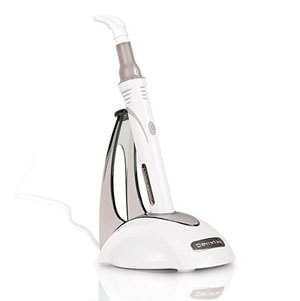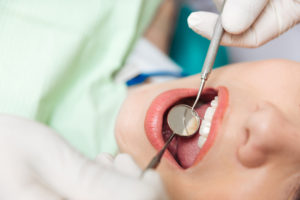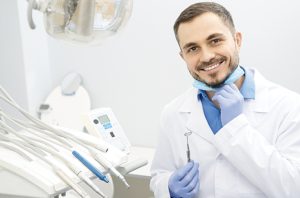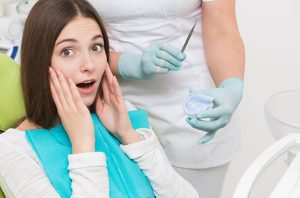The temporomandibular joint disorder causes discomfort at the hinge that connects the two temporal skull bones, located on both sides of the ear, to the Jaw
Temporomandibular Joint acts as a sliding hinge that allows up and down or sides to side jaw movements. However, a disorder known as Temporomandibular Joint Disorders (TMJ) may cause pain to the joint and muscle to prevent comfort during jaw movements. While TMJ Disorders remain popular, the exact cause for this disorder remain difficult to determine
Common Causes for TMJ Disorders
The pain you may feel during jaw movements may arise from the following combination of factors:
- Genetics
- Arthritis
- Jaw injury
- Teeth injury
- Jaw/ teeth misalignment
- Teeth grinding or clenching
- Poor posture
Although some people often clench their teeth or habitually grind teeth and rarely develop TMJ disorders. The pain associated with TMJ disorders often disappears through non-surgical treatment. TMJ disorders can be managed with self–managed care and conservative measures. Surgical intervention should come as a last resort. However, some patients may benefit from the surgical treatment.
Signs and Symptoms of TMJ Disorder
The temporomandibular joints consist of complex structures, and any injury to these bones, muscles, and tendons can result in pain. Depending on the exact cause of your pain, you may feel pain on one or both sides of the jaw area. Besides, the pain may exhibit when one is yawning, chewing, talking, or even resting. The common signs and symptom you should watch out for include the following:
- Aching facial pain
- Difficulty/ pain while chewing
- Difficulty while opening or closing your mouth
- Pain on the temporomandibular muscles
- Discomfort at the Jaw
- Headaches
- Jaw clicking and jaw popping
- Sore jaw muscles
- Locking of the joint
TMJ Disorder Diagnosis
Plan to visit a doctor who will discuss the various symptoms of TMJ disorders. A dentist can also provide a diagnosis for TMJ disorders. Once you visit a doctor/ dentist, they will probably listen to feel your jaw movements while you undertake to talk, eat or yawn. A doctor can also examine the extent to which you move your Jaw. They can also identify the exact location causing discomfort or pain by pressing areas around the Jaw. If the doctor suspects a problem, they are required to authorize further examination by:
- Conducting a dental X-ray for your Jaw and teeth
- Requesting for a CT scan for the temporomandibular joints to determine the involved bones and joints
- Conducting an MRI for the soft tissues around the temporomandibular joints and joint’s disc ton reveal the exact problem
Doctors can also conduct a TMJ arthroscopy while diagnosing TMJ disorders. Your doctor may insert a cannula into the joint space during a TMJ arthroscopy. The cannular or small thin tube helps the doctor insert a small camera known as the arthroscope into the joint space to view the area and pinpoint the cause of a patient’s TMJ disorder.
Treatment for TMJ Disorders
Most TMJ disorder cases and symptoms disappear without medical intervention. Unfortunately, if your symptoms persist, then it’s time to visit a doctor who can recommend either therapy, surgical intervention, medication, or home/ lifestyle remedies. A doctor may recommend one or a combination of treatment options simultaneously.
Medication
The following medication help relieve the pain associated with JMJ disorders.
- Anti-inflammatories or pain relievers– your doctor may prescribe strong pain reliever if over-the-counter pain medication does not prove effective for your TMJ pain.
- Tricyclic antidepressants- this medication, if taken in low doses, can be used in relieving pain, controlling insomnia and Bruxism, although their main purpose is for depression
- Muscle relaxants- Muscle spasms can cause the pain associated with TMJ disorders. Taking muscle relaxants on a short-term can help in relieving pain.
Therapies
Non-surgical and non-drug therapies can also help in treating TMJ disorders. They include the following:
- Physical therapy- in addition to physical exercise, doctors use this therapy to relieve pain and strengthen jaw muscles.
- Oral splints- this therapy involves the use of mouthguards by people experiencing jaw pain. Inserting a soft device over your teeth can help in relieving pain associated with TMJ disorders.
- Counseling- counseling entails correcting behaviors such as teeth clenching that can cause or aggravate your pain. With counseling, people can easily understand the factors that cause TMJ disorder and, consequently, avoid them.
Surgical intervention and Other procedures
After exhausting medication and therapy, a doctor may recommend the following procedures:
- Arthrocentesis- in this procedure, the doctor minimally inserts a small needle into the joint to remove inflammatory byproducts. This invasive procedure can also help in removing debris within the joint area
- Injections- a doctor may recommend corticosteroid injections to relieve pain caused by TMJ disorders. Botulinum toxin type A can also prove useful in countering pain in the jaw muscles.
- TMJ arthroscopy- arthroscopy surgery is a safer surgical option when compared to open-joint surgery. It involves inserting a cannula into the joint space, followed by an arthroscope and a surgical instrument into the joint area. Besides helping with a diagnosis, arthroscopy proves effective in treating various TMJ disorders. TMJ arthroscopy presents a fewer risk when compared to other surgical options. However, it has its limitations.
- Modified condylotomy- this type of surgery proves effective, especially when locking is experienced. It can be used to treat TMJ disorders indirectly. Modified condylotomy involves surgery around the mandible instead of the joint.
- Open-joint surgery- this surgery is mostly applicable when the pain originates from a problem within the joint’s structure. The doctor often recommends a patient try conventional methods first due to the risks involved. Unfortunately, if the pain does not resolve, the doctor can settle for open-joint surgery. Therefore, always ensure that the doctor carefully explains the risks, pros, and cons of this type o surgery before you can agree.
Lifestyle and home remedies
You should always become aware of the tension-related habits that cause TMJ disorders for you to avoid them. You can reduce the risk of TMJ disorders if you can reduce the frequency of activities such as chewing, teeth grinding, and Jaw clenching. The following tips will prove helpful in reducing TMJ symptoms if observed:
- Avoid overusing your jaws muscles whenever you can– jaw muscle often suffers most when experiencing pain associated with TMJ disorders. You can avoid avoid overworking your jaw muscles by minimizing activities such as chewing gum and eating sticky foods. Instead, adopt better habits, including eating soft foods, chopping food into smaller chewable pieces.
- Stretching and Massage- you can learn to massage your jaw muscle or ask your doctor to give you tips on exercises strengthening the jaw muscles.
- Heat or Cold technique– you can use moist heat or ice to alleviate jaw muscle pain
Alternative medicine
If the pain persists, you may find the following alternative medicine techniques helpful in alleviating the pain:
- Relaxation techniques- relaxing your muscle can help reduce pain. Learn to slow down your breathing by taking regular deep breathes to relax tense muscles.
- Biofeedback- you can use an electronic device to help you practice effective ways to relax your tense muscle
- Acupuncture- you can also consult a specialist trained in treating chronic pain. Once you know the specific area that causes TMJ pain, you can insert hair-thin needles to reduce pain.
















